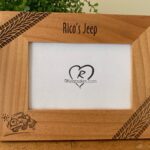I. Understanding the Basics of Upcycling a Wooden Table
II. Creative Ideas for Upcycling Your Wooden Table
III. Tools and Techniques for a Successful Upcycling Project
Understanding the Basics of Upcycling a Wooden Table
Hey there! So, you’re thinking about upcycling a wooden table? That’s fantastic! Upcycling not only gives new life to something that might otherwise be tossed aside, but it also allows you to express your creativity and personal style. Let’s dive into the basics of what upcycling really means and why it’s such a great idea!
What is Upcycling?
Upcycling is essentially the process of transforming old or unwanted materials into something of higher quality or value. Unlike regular recycling, which often breaks materials down to create new products, upcycling focuses on enhancing the original item. In your case, that’s a wooden table.
Why Choose Upcycling?
There are plenty of reasons to consider upcycling your wooden table:
- Environmental Impact: Upcycling reduces waste and lessens the demand for new materials. It’s a great way to contribute to a more sustainable planet.
- Unique Style: An upcycled table can be a unique piece that tells a story. You can customize it in ways that mass-produced furniture simply can’t match.
- Cost-Effective: Instead of spending a fortune on new furniture, upcycling allows you to create something beautiful at a fraction of the cost.
- Personal Satisfaction: There’s something incredibly satisfying about taking an old table and turning it into a stunning centerpiece for your home.
Assessing Your Wooden Table
Before you dive headfirst into your upcycling project, it’s important to assess the condition of your wooden table. Here’s how to do it:
- Check for Damage: Look for any loose joints, scratches, or dents. A little wear and tear can add character, but severe damage may require repairs.
- Identify the Wood Type: Knowing the type of wood can help you choose the right products and techniques for your upcycling project. Hardwoods like oak or maple are durable and great for refinishing.
- Consider the Finish: Is the table previously painted, stained, or varnished? This will influence how you prep the surface for your new design.
Getting Inspired!
Once you’ve assessed your table, it’s time to get inspired! Browse through Pinterest or local thrift stores to gather ideas. Remember, the goal is to let your imagination run wild! Upcycling is all about making something new from the old.
Final Thoughts
Upcycling your wooden table is not just a project; it’s an adventure! By understanding the basics, you set yourself up for success. Remember to take your time, enjoy the process, and don’t be afraid to experiment. After all, the beauty of upcycling is that every piece is a reflection of your creativity and personality. Happy upcycling!
Creative Ideas for Upcycling Your Wooden Table
Upcycling a wooden table can be a fun and fulfilling project, transforming an old piece of furniture into something fresh and exciting. If you’re looking for creative ideas to breathe new life into your wooden table, you’ve come to the right place! Let’s explore some innovative concepts that can inspire your next DIY adventure.
1. Farmhouse Chic
If you love the rustic vibe, turning your table into a farmhouse-style centerpiece is a fantastic option. Here’s how:
- Distressing the Surface: Use sandpaper to lightly distress the edges and corners of the table. This technique gives it a weathered, aged look.
- Paint it White: A coat of white chalk paint can create that classic farmhouse aesthetic. Follow up with a clear wax for protection and a smooth finish.
- Stain the Top: If your table has a wooden top, consider staining it a rich, dark color for contrast against the white base.
2. A Splash of Color
Don’t shy away from bold colors! Adding a pop of color can completely transform your wooden table. Here’s how:
- Select Your Color: Choose a vibrant color that resonates with your personal style. Think teal, sunny yellow, or even a deep royal blue.
- Use a Paint Sprayer: For a smooth and professional finish, consider using a paint sprayer. It’s a quick way to cover large surfaces without brush strokes.
- Add Stencils: Incorporate stencils for designs or patterns to personalize your table. Floral patterns, geometric shapes, or even quotes can make it unique.
3. Mosaic Madness
For those who love arts and crafts, creating a mosaic tabletop can be an exciting challenge.
- Gather Materials: Collect broken tiles, glass pieces, or even colorful stones. Make sure they are clean and safe to handle.
- Create Your Design: Lay out your pieces on the tabletop without glue to visualize your design. Get creative, and don’t be afraid to experiment!
- Glue and Grout: Once you’re happy with your design, glue the pieces down and let them dry. Afterward, apply grout to fill the gaps and seal everything together.
4. Adding Functionality
Sometimes, it’s not just about aesthetics but also enhancing functionality. Here are a couple of ideas:
- Incorporate Storage: If your table has a lower shelf, consider adding decorative baskets or boxes for storage. They can help keep your space tidy while looking stylish.
- Turn it into a Game Table: Paint the top with chalkboard paint to create a fun surface for games like Tic-Tac-Toe or Pictionary, perfect for family gatherings!
5. Nature Inspired
If you’re a fan of nature, why not bring the outdoors inside? Here’s how to make your table a nature-inspired masterpiece:
- Epoxy Resin: Use clear epoxy resin to encase natural elements like dried flowers, leaves, or even small branches. This creates a stunning, eye-catching surface.
- Wood Burned Designs: Try wood burning to add intricate designs or patterns that reflect natural motifs like trees, mountains, or animals.
With these creative ideas, your wooden table can become a standout piece in your home. The best part? You get to express your personality and style while giving an old table a brand-new life. So, gather your supplies and let your imagination run wild!
Tools and Techniques for a Successful Upcycling Project
So, you’ve decided to breathe new life into that old wooden table, huh? Awesome choice! Upcycling can be incredibly rewarding, but like any craft, having the right tools and techniques at your disposal is key to a successful project. Let’s dive right into what you need to pull this off smoothly!
Essential Tools for Upcycling
First things first, let’s talk tools. Don’t worry, you don’t need a whole workshop full of fancy gadgets to get started. Here’s a basic list to get you going:
- Sander: A power sander will save you a lot of elbow grease, but if you’re going old-school, a sanding block works just fine. Make sure to have various grits of sandpaper for a smooth finish!
- Paintbrushes and rollers: Depending on your desired finish, having a good set of brushes and rollers is essential. Consider using foam rollers for an ultra-smooth paint job.
- Wood glue: If you’re making any repairs or adding new elements, a strong wood glue will be your best friend.
- Measuring tape and square: Precision is key! Make sure your dimensions are spot on, especially if you’re adding new shelves or features.
- Safety gear: Don’t forget your goggles and dust mask. Safety first!
Techniques to Enhance Your Upcycling Skills
Now that you have your tools ready, let’s explore some handy techniques that can elevate your upcycling game:
- Preparation is Everything: Before you start painting or refinishing, make sure to clean the table thoroughly. Remove any dirt, grease, or grime. A clean surface allows for better adhesion and a smoother finish.
- Sanding Like a Pro: Start with a coarser grit to remove old finishes, then move to finer grits for a silky feel. Remember, the more patience you have with sanding, the better your final product will be!
- Testing Your Paint or Stain: Always test your chosen paint or stain on a small, inconspicuous area first. This helps you see how the wood reacts and ensures you love the color before committing.
- Layer Your Finish: When painting, multiple thin coats are better than one thick coat. This not only looks nicer but also helps prevent drips and uneven surfaces.
- Creative Techniques: Don’t be afraid to experiment! Try techniques like distressing for a rustic look or stenciling for a personalized touch. The sky’s the limit!
Final Touches
Once you’ve completed the major work, it’s time for the final touches. Applying a protective finish, like polyurethane, will help keep your upcycled table looking great for years to come. And don’t forget to step back and admire your handiwork! You’ve transformed something old into something beautiful, and that’s pretty amazing.
So, gather your tools, roll up your sleeves, and let your creativity flow. Upcycling a wooden table is not just about saving money; it’s about creating something truly unique that reflects your personal style. Happy upcycling!










Comments